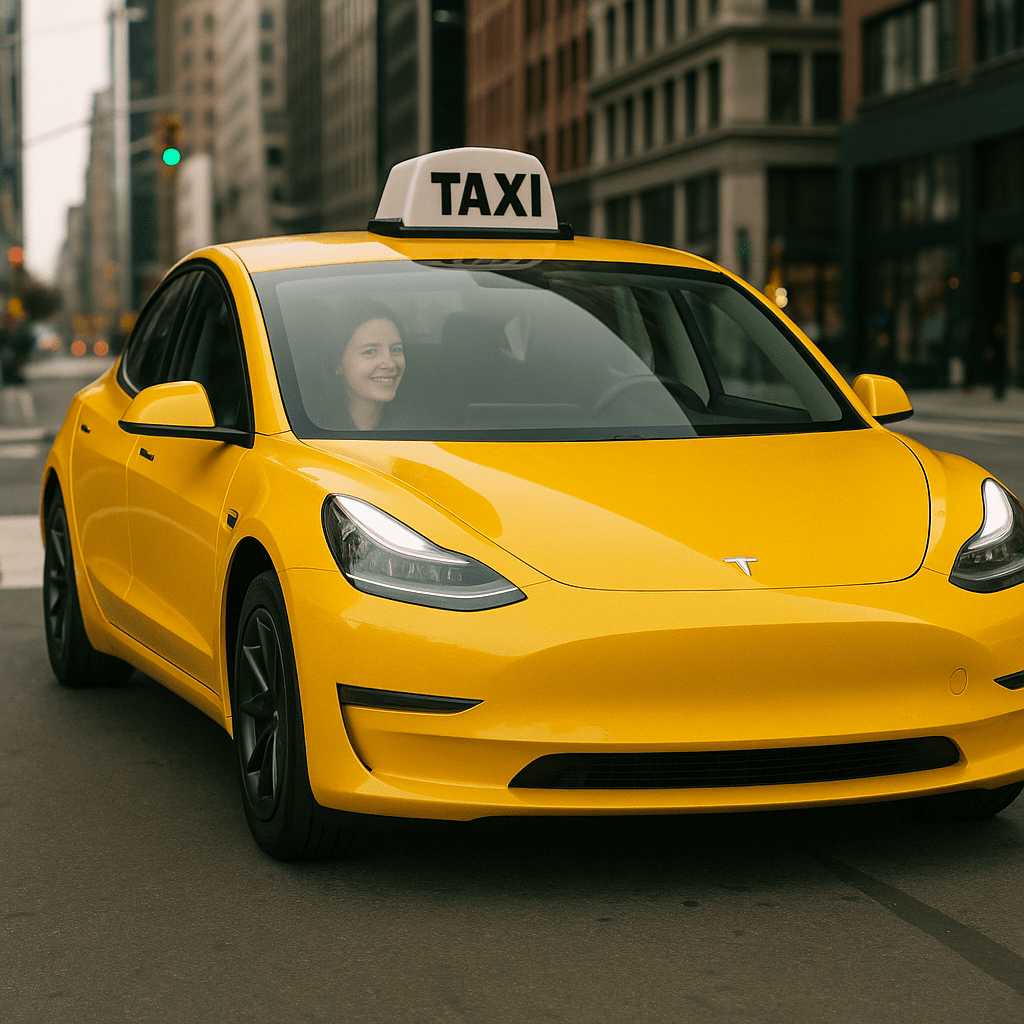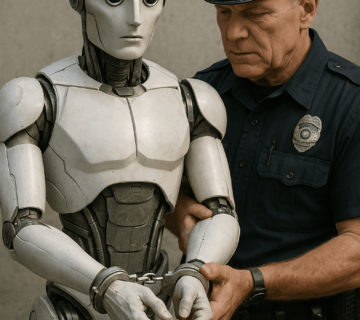Elon Musk recently made waves with a striking update; Tesla’s long-promised robotaxi service, dubbed Tesla Taxi, is “closer than expected.” This bold claim has reignited speculation and excitement across the tech, EV, and mobility sectors. But what does “closer” really mean? And what factors are accelerating Tesla’s path to launching a fully autonomous taxi service?
This article dives into five key reasons why Tesla Taxi might be arriving sooner than we all anticipated, and what this could mean for everyday transportation, the economy, and the way we interact with vehicles.
1. Full Self-Driving (FSD) Has Crossed a Critical Threshold
Tesla’s most vital asset in its race to a robotaxi future is its Full Self-Driving (FSD) system. What started as Autopilot designed to assist drivers, has now evolved into a near-complete self-driving experience capable of navigating city streets, highways, and complex traffic conditions.
Musk has consistently emphasized Tesla’s AI-driven, vision-based approach. Unlike LIDAR-heavy competitors like Waymo or Cruise, Tesla relies on camera-only neural networks, making its solution vastly more scalable and cost-effective.
In 2024, Tesla rolled out FSD v12, marking a massive shift toward neural net trained decision-making. This version doesn’t rely on programmed rules, it “learns” how to drive from real-world data. With millions of miles of training data, Tesla’s fleet is effectively training itself, pushing FSD closer to full autonomy.
Elon Musk even teased an August 2025 event dedicated to unveiling Tesla’s robotaxi vehicle. That’s not a guess, that’s a plan.
2. Tesla’s Fleet Learning System Gives It a Unique Advantage
Tesla already has millions of vehicles on the road, all feeding real-time data into a centralized neural network. Each Tesla vehicle acts like a rolling data collector, feeding back edge cases, driver behavior, and unique driving scenarios to Tesla HQ.
This Fleet Learning System gives Tesla a head start no competitor can replicate. While other companies build and test in controlled environments, Tesla learns from real-life streets every single day.
As more users opt into FSD Beta, Tesla accumulates terabytes of edge data from unusual intersections to unpredictable pedestrian behavior. Over time, this helps Tesla refine its driving algorithm to an almost human-like level of perception and reaction.
This collective intelligence helps accelerate the path to safe, reliable, Tesla Taxis, trained not in labs but in our actual neighborhoods.
3. A Custom Robotaxi Vehicle is Already in Development
In contrast to simply retrofitting existing Model 3 or Model Y vehicles, Tesla is actively working on a purpose-built robotaxi vehicle.
Codenamed “Cybercab” by some insiders, this upcoming vehicle is designed without a steering wheel or pedals entirely autonomous from the ground up. Its design promises ultra-low cost per mile, optimized seating, enhanced safety features, and native integration with Tesla’s AI software stack.
This vertical integration allows Tesla to eliminate design compromises. The robotaxi vehicle will likely be:
- Smaller and more efficient than the Model 3
- Easier to manufacture at scale
- Optimized for urban transport and ride-sharing
- Built using Tesla’s “Unboxed Process” for cheaper, faster assembly
Tesla’s next-generation platform, also used for the $25,000 car, could share technology with this robotaxi, lashing production costs and enabling wider rollout.
4. Regulatory Progress Is Happening Faster Than Expected
Regulation has always been the bottleneck. But surprisingly, that bottleneck is beginning to loosen.
In states like California and Texas, autonomous vehicle laws have evolved dramatically over the last year. Tesla is quietly working with state and federal bodies to build a framework for autonomous ride-hailing, and early pilots are already underway in private zones.
More encouragingly, NHTSA’s recent policy shifts support real-world testing of L4 and L5 autonomous vehicles. Tesla’s recent inclusion in these discussions shows regulatory confidence in its progress.
Tesla’s approach may also benefit from public fatigue with traditional ride-hailing problems: surge pricing, poor driver behavior, and inefficiency. If Tesla can deliver a safer, cheaper, and greener solution, regulators will be under public pressure to say “yes.”
5. Consumer & Market Readiness Has Never Been Higher
Let’s face it, just five years ago, few people were ready to step into a car with no driver. Today? Not only are people curious, they’re eager.
This change stems from:
- Increased exposure to semi-autonomous vehicles
- Trust built by years of Autopilot use
- Growing environmental concerns
- A desire to cut transportation costs
People want reliable, low-cost transport and they’re less hung up on “who’s driving.” Add to that Tesla’s rising brand equity, and Tesla Taxi seems poised to find a welcoming audience.
Additionally, cities around the world are pushing for greener transport solutions. A fully electric robotaxi fleet fits perfectly into urban climate strategies, offering an aligned solution for both consumers and policymakers.
Conclusion: Why Tesla Taxi Might Hit the Streets Sooner Than You Think
Tesla’s robotaxi dream once felt like sci-fi. But today, with AI breakthroughs, fleet learning, purpose-built hardware, regulatory support, and growing consumer readiness, it’s morphing into reality quickly.
Musk’s claim that Tesla Taxi is “closer than expected” is not an overstatement. If these five factors hold their momentum, we might see fully autonomous Teslas picking up passengers before the end of 2026.
The age of self-driving transportation is no longer theoretical, it’s pulling up to the curb.
FAQs
Tesla Taxi refers to an upcoming robotaxi service developed by Tesla. These are fully autonomous, electric vehicles designed to operate without a human driver. They can be summoned via app and are intended to provide on-demand, low-cost, efficient transportation.
While Elon Musk hasn’t confirmed a public launch date, he has stated that Tesla’s robotaxi is “closer than expected.” Based on current developments, pilot programs could begin as early as late 2025, with wider public access in 2026 or beyond.
Yes. Tesla is designing a purpose-built robotaxi vehicle that will lack a steering wheel or pedals entirely. It will rely entirely on Tesla’s Full Self-Driving (FSD) software and AI to navigate without human input.
Tesla claims that its FSD system is already safer than a human driver in many scenarios. The company continues to refine its AI with real-world data from its global fleet. While no system is perfect, Tesla’s vision is to eventually make robotaxis significantly safer than human operated cars.
Exact pricing hasn’t been disclosed yet. However, Elon Musk has suggested that Tesla Taxi rides could cost less than a bus ticket per mile in many regions. This is due to lower maintenance, no driver salary, and energy efficiency.
Yes, eventually. One of Tesla’s proposed features is allowing Tesla owners to enroll their vehicles in the robotaxi fleet during downtime, earning income while they’re not using their cars. This is part of Tesla’s “shared fleet” vision.


